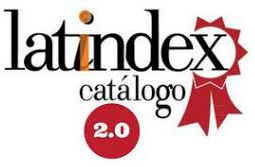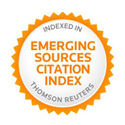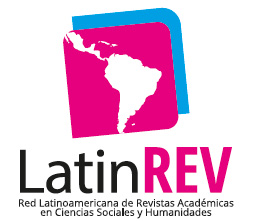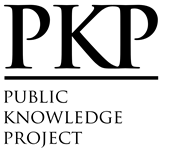Emotion in political Facebook communication
An analysis of Facebook posts published by Argentine political leaders Cristina Fernández, Mauricio Macri, Sergio Massa, and Daniel Scioli between November 2014 and November 2015
Abstract
In recent decades, messages by political leaders have become increasingly simple, tending to focus on personality and emotion. According to some authors, this is the result of political leaders attempting to capture the attention of citizens who are disengaged from political issues. Moreover, the increased use of social media in political communication promotes and exacerbates this kind of communication thanks to the very architecture of these digital platforms. This article analyzes Facebook posts published by Cristina Fernández, Mauricio Macri, Sergio Massa, and Daniel Scioli between November 2014 and November 2015. Our aim is to describe the role played by emotion in these posts by Argentine political leaders on Facebook, where half the Argentine population has an active account. The results of this empirical work help demonstrate that Argentine political leaders use Facebook as an engagement platform rather than as a conversational channel, since emotional messages are more frequently shared than more rational posts.
Downloads
References
Aguilar, R. (2013). ¿Emociones y razón? Política y Gobierno, 20(1), 141-158.
Amado, A., & Tarullo, R. (2015). Tuitear para agendar: el uso de Twitter como gacetilla. Revista Mexicana de Opinión Pública, 19(julio-diciembre), 127-145.
Aragón, P., Kappler, K. E., Kaltenbrunner, A., Laniado, D., & Volkovich, Y. (2013). Communication dynamics in twitter during political campaigns: The case of the 2011 Spanish national election. Policy and Internet, 5(2), 183-206. doi: http://doi.org/10.1002/1944-2866.POI327.
Argentina. Dirección Nacional Electoral (2015). Resultados de las elecciones Primarias Abiertas Simúltaneas y Obligatorias (PASO). Recuperado de http://elecciones.gob.ar/admin/ckfinder/userfiles/files/P_V__DEFINITIVO%20x%20Distrito_PASO%202015(3).pdf.
Argentina. Instituto Nacional de Estadística y Censos (2016). Acceso y uso de tecnologías de la información y la comunicación. EPH. Recuperado de http://www.indec.gov.ar/nivel4_default.asp?id_tema_1=3&id_tema_2=11&id_tema_3=54_1=3&id_tema_2=11&id_tema_3=54.
Bardin, L. (1996). Análisis de contenido. Madrid: Akal Ediciones.
Bauman, Z. (2003). Modernidad líquida. Buenos Aires: Fondo de Cultura Económica.
Beck, U. (1997). Subpolitics: Ecology and the Disintegration of Institutional Power. Organization & Environment, 10(1), 52-65. doi: http://doi.org/10.1177/0921810697101008.
Bennett, W., & Iyengar, S. (2008). A New Era of Minimal Effects? The Changing Foundations of Political Communication. Journal of Communication, 58(4), 707-731. doi: http://doi.org/10.1111/j.1460-2466.2008.00410.x.
Berelson, B. (1971). Content Analsys in Communication Reseach. New York: Hafner.
Boczkowski, P. J., & Mitchelstein, E. (2013). News Gap: When the Information Preferences of the Media and the Public Diverge. Cambridge: The Mit Press.
Boyd, D., Golder, S., & Lotan, G. (2010). Tweet, tweet, retweet: Conversational aspects of retweeting on Twitter. Proceedings of the Annual Hawaii International Conference on System Sciences. doi: http://doi.org/10.1109/HICSS.2010.412.
Brader, T. (2006). Campaigning for Hearts and Minds, How Emotional Appeals in Political Ads Work. Chicago: University of Chicago Press.
Castells, M. (2008). Ciudadanía en la Red: poder y contrapoder en los medios de comunicación. Telos: Cuadernos de Comunicación e Innovación, 75(2), 679-687.
Castells, M. (2009). Comunicación y poder. Barcelona: Alianza.
Coleman, R., & Banning, S. (2006). Network TV News’ Affective Framing of the Presidential Candidates: Evidence for a Second-Level Agenda-Setting Effect through Visual Framing. Journalism & Mass Communication Quarterly, 83(2), 313-328. doi: http://doi.org/10.1177/107769900608300206.
Conover, M., Ratkiewicz, J., & Francisco, M., Goncalves, B., Flammini, A., Menczer, F. (2011). Political polarization on twitter. Icwsm, 133(26), 89-96. doi: http://doi.org/10.1021/ja202932e.
D`Adamo, O., García Beaudoux, V., & Kievaky, T. (2015). Comunicación política y redes sociales : análisis de las campañas para las elecciones legislativas de 2013 en la ciudad de Buenos Aires. Revista Mexicana de Opinión Pública 19, 107-125.
D´Adamo, O., & García Beaudoux, V. (2006). Comunicación política y campañas electorales. Análisis de una herramienta comunicacional: el spot televisivo. Polis, 2(2), 81-111.
Dafonte-Gómez, A. (2014). Claves de la publicidad viral: De la motivación a la emoción en los vídeos más compartidos. Comunicar, 22(43), 199-207. doi: http://doi.org/10.3916/C43-2014-20.
Dahlgren, P. (2006). Doing citizenship: The cultural origins of civic agency in the public sphere. European Journal of Cultural Studies, 9(3), 267-286. doi: http://doi.org/10.1177/1367549406066073.
Damasio, A. (2001). Fundamental feelings. Nature, 413(6858), 781. doi: http://doi.org/10.1038/35101669.
Damasio, A. (2005). En busca de Spinoza. Barcelona: Crítica.
Damasio, A. (2006). Descartes’ Error (Kindle). London: Vintage Books.
Damasio, A. (2007). En busca de Spinoza. España: Drakontos.
Deltell, L., & Martínez Torres, A. G. (2015). Análisis perfiles de los presidentes latinoamericanos en Twitter. Telos . Cuadernos de Comunicación e Innovación, 99, 114-125.
Dobele, A., Lindgreen, A., Beverland, M., Vanhamme, J., & van Wijk, R. (2007). Why pass on viral messages? Because they connect emotionally. Business Horizons, 50(4), 291-304. doi: http://doi.org/10.1016/j.bushor.2007.01.004.
Eckler, P., & Bolls, P. (2011). Spreading the virus: Emotional tone of viral advertising and its effect on forwarding intentions and attitudes. Journal of Interactive Advertising, 11(2), 1. doi: http://doi.org/10.1080/15252019.2011.10722180.
Ekman, P., Wallace, V., & Phoebe, E. (1972). Emotion in the Human Face. New York: Pergamon.
Espinosa Pezzia, A. (2008). Decidiéndose por el mal menor: El rol de las emociones en las elecciones peruanas del 2006. Psicología Política, 37(37), 47–70.
FireShot (versión standard). [software] (2014). Obtenido de: https://getfireshot.com.
Hatfield, E., Cacioppo, J., & Apson, R. (1994). Emotional Contagion. New York: Cambridge University Press.
Huddy, L., Feldman, S., & Casesse, E. (2007). On the distinct political effects of anxiety and anger. En W. R. Newman, G. E. Marcus, A. Crigler, & M. Mackuen (Eds.), The affect effect: Dynamics of emotion in political thinking and behavior (pp. 202-230). Chicago: University of Chicago Press.
Interbarómetro. (2014). Análisis de la política argentina en la red. Recuperado de http://cigob.org.ar/wp-content/uploads/2015/02/Interbarometro-Octubre2014.pdf.
Jakobson, R. (1974). Ensayos de lingüística general. Barcelona: Editorial Seix Barral.
Just, M., Crigler, A., & Belt, T. (2007). «Don´t give up hope» Emotions, Candidate, Appraisal and Votes. En G. E. Marcus, N. W. Russell, M. Mackuen, & A. Crigler (Eds.), The affect effect, dynamics of emotion in political thinking and behaviour (pp.-259). Chicago: University of Chicago Press.
Kemp, S. (2015). Digital, Social & Mobile Worlwide. Recuperado de http://wearesocial.com/special-reports/digital-social-mobile-worldwide-2015
Krippendorff, K. (1990). Metodología y análisis de contenido: teoría y práctica. Barcelona: Paidós.
Lang, A. (1994). How they predict memory for Television Messages. En Annual Meeting of the Association for Education in Journalism and Mass Communication. Atlanta.
Las encuestas confirman que sigue el empate entre Massa, Macri y Scioli (23 de noviembre de 2014), i profesional. Consultado el 6 de julio de 2016 en http://www.iprofesional.com/notas/201017-Las-encuestas-confirman-que-sigue-el-empateentre-Massa-Macri-y-Scioli-.
Marcus, G. E. (2002). The Sentimental Citizen, Emotion in Democratic Politics. Pennsylvania: Pennsylvania State University Press.
Marcus, G., Neuman, W. R., & Mackuen, M. (2000). Affective Intelligence and Politial Judgment. London: University of Chicago Press.
Marcus, G., Neuman, W., & MacKuen, M. (2017). Measuring Emotional Response: Comparing Alternative Approaches to Measurement. Political Science Research and Methods, 5(4), 733-754. http://doi.org/10.1017/psrm.2015.65.
Miller, J. M., & Krosnick, J. A. (2004). Threat as a motivator of political activism: A field experiment. Political Psychology, 25(4), 507-523. doi: http://doi.org/10.1111/j.1467-9221.2004.00384.x.x.
Oatley, K., & Jenkins, J. (2007). Understanding Emotions. Oxford: Blackwell Publishing.
Pérez, G. (1994). Investigación cualitativa. Retos e interrogantes. Tomo II. Técnicas de análisis de datos. Madrid: La Muralla.
Poushter, J., Bell, J., & Oates, R. (2015). Internet seen as positive influence on education but negative on morality in emerging and developing nations. Washington, DC: Pew Research Center., 1-75. Recuperado de http://www.pewglobal.org/files/2015/03/Pew-Research-Center-Technology-Report-FINAL-March-19-20151.pdf.
Riffe, D., Aust, C., & Lacy, S. (1993). The Effectiveness of Random, Consecutive Day and Constructed Week Sampling in Newspaper Content Analysis. Journalism and Mass Communication Quarterly, 70(1), 133-139.
Rincón, O. (2011). Mucho ciberactivismo... pocos votos. Nueva Sociedad, (235), 74-89.
Russell, N. W., Marcus, G., Crigler, A., & Mackuen, M. (2007). Theorizing affect´s effects. En N. W. Russell, G. Marcus, A. Crigler, & M. Mackuen (Eds.), Affect Effect. Dynamics of emotion in polititical thinking and behaviour (pp. 1-21). Chicago: The University of Chicago Press.
Sánchez Aranda, J. J. (2012). Las reacciones emocionales de la audiencia ante las ficciones audiovisuales. Aproximaciones teóricas y cuestiones metodológicas implicadas. Revista de Comunicación, 11, 88-109.
Según una encuesta Daniel Scioli lidera la intención de voto para 2015 y Macri crece detrás de Massa, (12 de junio de 2014), La Nación. Recuperado de http://www.lanacion.com.ar/1700773-segun-una-encuesta-daniel-scioli-lidera-la-intencionde-voto-para-2015-y-macri-crece-detras-de-massa.
Silverstein, M. (1979). Language as a part of culture. Horizons of Anthropology, 119-131.
Sinca. (2013). Encuesta Nacional de Consumos Culturales. Recuperado de http://www.sinca.gob.ar/sic/encuestas/.
Stempel, G., & Westley, B. (1989). Análisis de contenido. New York: Prentice Hall.
Stieglitz, S., & Dang-Xuan, L. (2013). Emotions and Information Diffusion in Social Media—Sentiment of Microblogs and Sharing Behavior. Journal of Management Information Systems, 29(4), 217-248. doi: http://doi.org/10.2753/MIS0742-1222290408.
Sunstein, C. (2007). Republic.com 2.0. Princeton: Princeton University Press. doi: http://doi.org/10.1017/CBO9781107415324.004.
Tarullo, R., & Amado, A. (2015). Nuevas tecnologías, usos viejos: las redes sociales en la campaña permanente. Trabajo presentado en XII Congreso Nacional de Ciencia Política. Sociedad Argentina de Análisis Político y la Universidad Nacional de Cuyo, Sociedad Argentina de Análisis Político, Mendoza.
Teixeira, T. (2012). The New Science of Viral Ads. Harvard Business Review 90(3), 25-27.
Toret, J. (2013). Tecnopolítica: la potencia de las multitudes conectadas. El sistema red 15M, un nuevo paradigma de la política distribuida. IN3 Working Paper Series, 1-178.
Valentino, N., Hutchings, T., Banks, A., & Davis, A. (2008). Is a worried citizen a good citizen? Emotions, political information seeking, and learning via the internet. Political Psicology, 29, 247-273.
Valenzuela, S. (2011). The Affective Citizen Communication Model: How Emotions Engage Citizens with Politics through Media and Discussion. (Tesis doctoral). The University of Texas at Austin.
Wahl-Jorgensen, K. (2014). The emotional architecture of social media: the case of the Facebook «Like» button. En Presentation at the University of Leicester.
Copyright (c) 2018 María Raquel Tarullo

This work is licensed under a Creative Commons Attribution-NonCommercial 4.0 International License.
The authors retain the copyright and guarantee the journal the right to be the first publication of the work. In case that a translation of the article already published in Austral Comunicación can be published in another journal, it is requested to record the original publication in the translated version.
The license used is CC BY-NC-SA, which allows sharing (copying and redistributing the material in any medium and format) and adapting (remixing, transforming and building on the material) under the following terms: attribution (acknowledge authorship) and non-commercial (the material cannot be used for commercial purposes). Update: February 1, 2022.
Austral Comunicación allows the author (s) to retain the publication rights without restrictions.











































